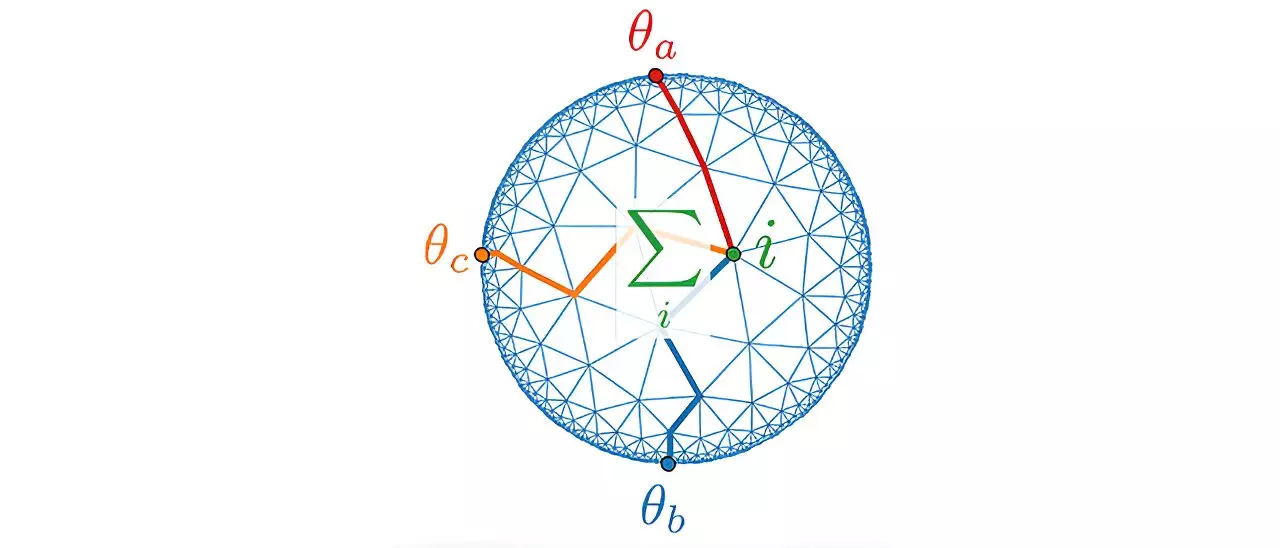Gravity has long been a cornerstone of physics, often viewed as a fundamental force governing the cosmos. With the advancements in science, our understanding of gravity has seen remarkable growth, especially when considering vast distances. We’re now able to accurately predict the orbits of celestial bodies, model tidal movements, and effectively launch exploratory missions into space. Yet, beneath this surface of clarity lies a deeper enigma: the nature of gravity when we examine the quantum realm, where established theories falter.
Professor Johanna Erdmenger from the University of Würzburg emphasizes the urgency of bridging this knowledge gap. “To unravel phenomena like the Big Bang or the enigmatic interiors of black holes, a comprehension of gravity’s quantum characteristics is paramount,” she states. The challenge arises because at extremely high energy levels or minuscule scales, traditional gravitational laws no longer apply. Thus, researchers are on a mission to forge new theoretical frameworks that could potentially unify gravity’s behavior across all scales.
A significant breakthrough in the arena of quantum gravity is the Anti-de-Sitter/Conformal Field Theory (AdS/CFT) correspondence. This revolutionary theoretical construct proposes a fascinating relationship where intricate gravitational models in higher-dimensional spaces can be translated into simpler quantum theories manifesting on the surface or boundary of that space. To break it down, Anti-de-Sitter (AdS) represents a unique curved spacetime configuration, akin to an inward-bulging hyperbola, while Conformal Field Theory (CFT) pertains to quantum systems exhibiting consistent properties across various spatial scales.
While these concepts may initially seem daunting, they serve as essential tools in understanding gravitational mechanics at a quantum level with more straightforward mathematical approaches. Erdmenger likens this correspondence to a hologram—where the quantum interactions occurring at the boundary of a curved space correlate with the intricate dynamics occurring within. This model serves not only as a theoretical connection but also as an invitation to explore new dimensions of gravitational theory further.
Alongside her team, Erdmenger has made strides toward experimentally validating the previously untestable predictions of the AdS/CFT correspondence. Utilizing a branched electrical circuit, they have established a method to replicate the characteristics of curved spacetime. In this setup, the electrical signals generated at various circuit junctions act as analogues for the gravitational dynamics expected at specific points in theoretical spacetime.
Their research, recently published in the journal Physical Review Letters, presents compelling calculations demonstrating that the dynamics observed at the circuit’s edges align with those anticipated within the simulated spacetime model. This groundbreaking finding not only affirms a core premise of the AdS/CFT correspondence but also sets the stage for further experimental investigations, pushing the boundaries of how we understand gravity.
Looking ahead, the research team intends to transition from theoretical models to practical applications, moving their testing setup into real-world experimentation. This objective is not confined solely to expanding our fundamental knowledge of gravity; it also harbors the potential for significant technological breakthroughs.
Erdmenger notes that their innovative circuits could pave the way for new applications in quantum technology. “These advancements are predicted to enhance signal transmission efficiency by minimizing energy loss, leveraging the spatial curvature created within the circuitry to consolidate and stabilize electrical signals,” she explains. Such innovations could revolutionize how we approach electrical engineering and communication technologies, aligning theoretical physics with the practical realities of technical application.
As physicists continue to pursue the elusive quest for a unified theory of quantum gravity, projects like those at the University of Würzburg stand at the forefront, promising to unveil the intricate interplay between the universe’s most expansive phenomena and the tiny particles that underpin our reality. Through these efforts, the once-mysterious nature of gravity is gradually being illuminated, offering a pathway towards new understanding and technological potential.

